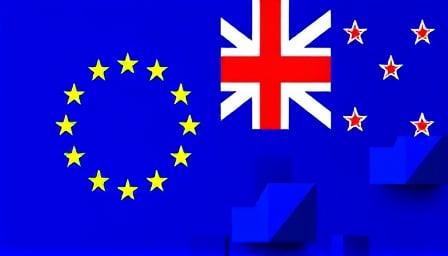Forex Market Update: Euro/New Zealand Dollar Dynamics
In the ever-evolving landscape of the forex market, the Euro/New Zealand Dollar (EUR/NZD) pair continues to capture the attention of traders and analysts alike. As of September 1, 2025, the pair closed at 1.98356 on the IDEAL PRO exchange, reflecting a nuanced interplay of economic factors and market sentiment.
Recent Performance and Trends
The EUR/NZD pair has experienced significant volatility over the past year, with a 52-week high of 2.00313 recorded on August 19, 2025, and a low of 1.7502 on September 29, 2024. This range underscores the pair’s sensitivity to both European and New Zealand economic indicators, as well as broader geopolitical developments.
Key Influences on the Pair
Several factors have been instrumental in shaping the current trajectory of the EUR/NZD. On the European front, the Eurozone’s economic recovery post-pandemic has been a critical driver. Stronger-than-expected GDP growth and a resilient labor market have bolstered the Euro, while the European Central Bank’s monetary policy stance continues to be a focal point for traders.
Conversely, New Zealand’s economic outlook has been influenced by its trade dynamics and domestic fiscal policies. The country’s reliance on commodity exports, coupled with fluctuating global demand, has introduced an element of uncertainty. Additionally, the Reserve Bank of New Zealand’s interest rate decisions remain pivotal in determining the Kiwi’s strength against the Euro.
Market Sentiment and Outlook
As we move forward, market sentiment towards the EUR/NZD pair will likely hinge on upcoming economic data releases and policy announcements from both regions. Traders are closely monitoring the Eurozone’s inflation trends and the ECB’s potential policy shifts, while also keeping an eye on New Zealand’s economic resilience amidst global trade challenges.
In conclusion, the EUR/NZD pair remains a compelling narrative in the forex market, with its performance intricately linked to the economic fortunes of both the Eurozone and New Zealand. As investors navigate this dynamic landscape, staying attuned to fundamental developments will be key to anticipating future movements in this pair.
